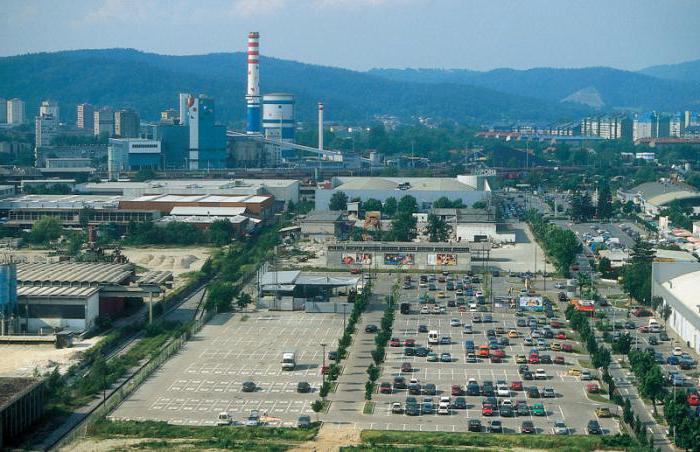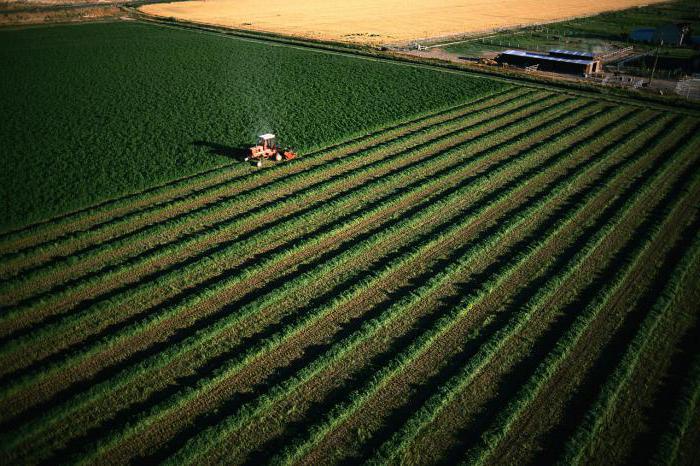All lands located on the territory of the Russian Federation, according to the current legislation, can have their purpose. And depending on the purpose of their use, land plots are divided into categories.
What does the target land allocation look like?
Given that the category of land implies features of its operation, it makes sense to highlight 7 main types of areas that are currently being used:
- agricultural plots;
- settlements;
- lands of the forest fund;
- lands of water fund;
- industrial and other special purposes;
- reserve lands;
- specially protected objects and territories.

Each of these sites has a special legal regime due to their significant differences from other types of land.
Settlement lands
In order to better understand what the categories of permitted use of land are, it is worth paying attention to each of them. And if we touch on the topic of settlements, it should be noted that this type means land that is intended and operated for the development and development of rural as well as urban settlements. These lands are separated by their own line from other areas.
This category of land, as a settlement, is divided into rural land (villages, villages, hamlets, villages, etc.) and urban (villages, cities). These types of sites can be divided as follows depending on the population:
- extra large cities;
- Largest cities;
- big cities;
- big cities;
- medium;
- villages and small towns (more than 5 thousand);
- large rural settlements;
- medium rural settlements (2-10 thousand);
- small rural settlements (less than 200 people live in such areas).

Each settlement, regardless of type, is divided into territorial zones established during the development planning of a specific category of the site.
Types of territorial zones
If you pay attention to the legislation of the Russian Federation, you will notice that the territorial zones have the following division:
- social business;
- production;
- business;
- special purpose;
- agricultural use;
- allocated for transport as well as engineering infrastructures;
- for military installations;
- recreational (we are talking about areas that are occupied by squares, city forests, parks, ponds, reservoirs, lakes or are used for tourism and as recreation areas).

If the plots are within the same territorial zone then one is used for them urban planning regulations. Moreover, all owners must follow it without fail.
It is important to know that for determining the type of a specific territory, codes of categories of land plots can be used. This information will be relevant in the process of transferring land from one species to another.
Agricultural land
Considering the types, categories of land, you need to pay attention to the areas that are used for agricultural needs and are located outside the settlements. They may include land on which:
- closed reservoirs;
- communications;
- on-farm roads;
- tree-shrubbery vegetation, which is used as protection against negative man-caused, man-made and natural phenomena;
- constructions, structures and buildings of industrial importance.
Such territories are protected especially carefully, since they have priority in use. For the same reason, for any non-agricultural needs, including for the construction of construction sites, lands that are unsuitable for operation within the framework of agriculture are used.
Protected Areas and Territories
This category of land is used to determine those areas that have a special scientific, environmental, recreational, aesthetic, recreational, historical and cultural or other valuable value.
This category also includes lands completely or partially withdrawn from economic circulation and use. As an example, resorts and areas of medical and recreational value can be cited.
Industrial and other special purpose
This category can be defined as independent. Depending on the nature of the tasks applicable to the land, there are several types of plots that are used for:
- transport;
- industry;
- power engineering;
- space activities;
- radio broadcasting, computer science, communications and television;
- security and defense.

For many of these lands, the presence of sanitary protection, security and other zones, in relation to which special conditions of use apply, is characteristic. Also, this category of land implies limited rights of tenants, land users and owners.
Lands of forest, water resources and reserves
The following sections can be attributed to this category:
- lands that are in municipal or state ownership and are not used by legal and civilians (reserve lands);
- land allocated for the zones of protection of water intakes and the establishment of allotment lanes, as well as land plots water protection zones and directly the water bodies themselves (the territory of the water fund);
- forest lands and those areas that are used for forestry (forest fund territory).
It is worth noting the following fact: the use of reserve lands is permissible only provided that they are transferred to another category.

As for the issue of changing the category of a land plot, it makes sense to talk about a labor-intensive process, because at the moment there is no worked out action plan that would harmoniously harmonize with the current law of the Russian Federation.
At the same time, if you act competently, then you can draw up and use various categories of lands without any special difficulties. For example, to conduct construction work on a plot of agricultural significance, it is not necessary to re-register its category, it is enough to just change the type of permitted use of the plot.
Land for preferential categories of citizens
Based on the legislation of the Russian Federation, those citizens who fall into preferential categories are entitled to free rental or ownership of land for the following purposes:
- conducting country housekeeping;
- for gardening;
- individual housing construction;
- farming.
In cases where it is necessary to determine the category of a land plot, this information can be found in the certificate of ownership or use the resources of the Federal Office for the Unified Registration of Land.

As you can see, the law clearly delineates the purpose of various lands and regulates their use according to a certain category. Moreover, if you carefully study the existing laws, you can competently dispose of various types of land using them for alternative purposes.
